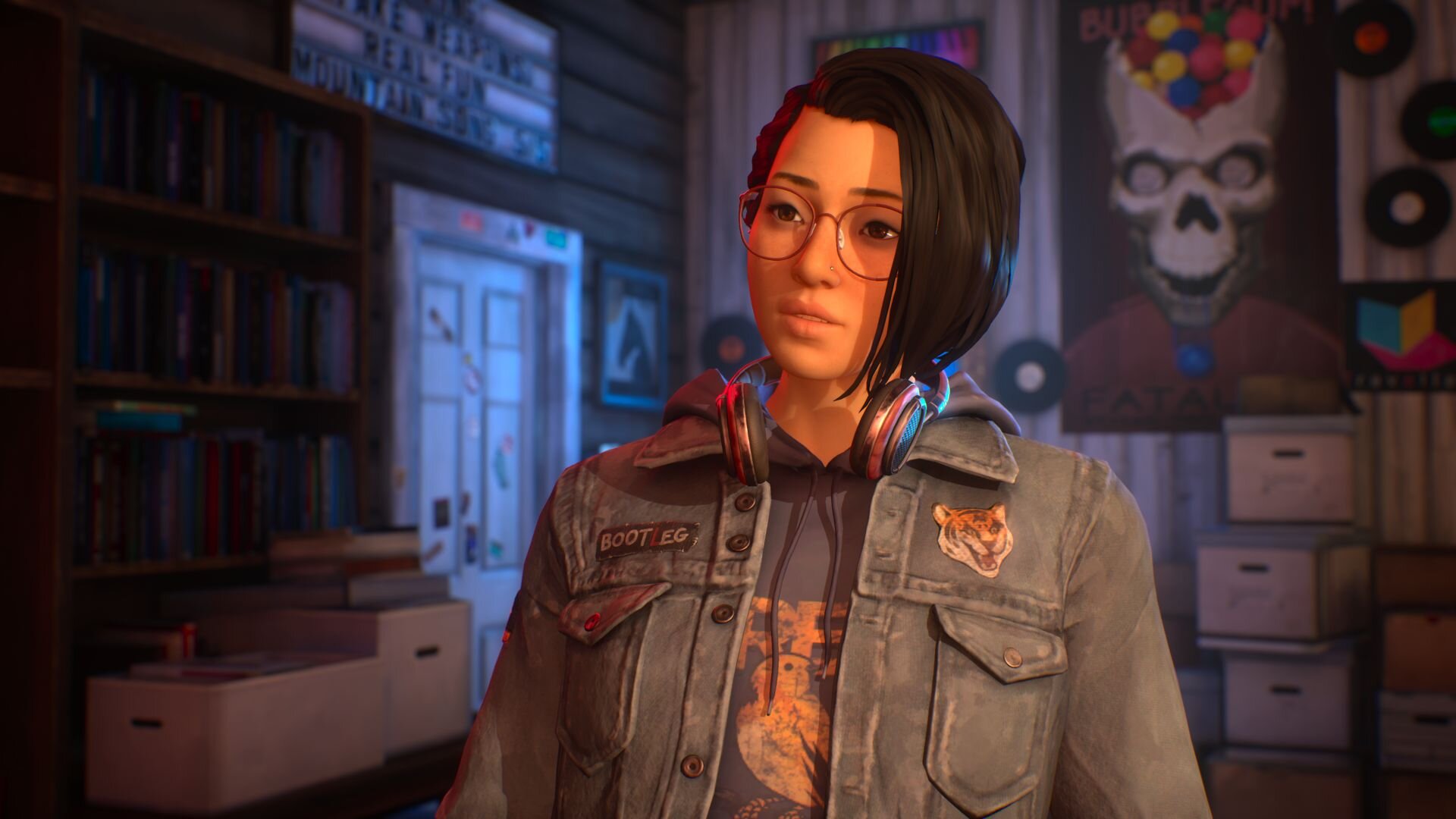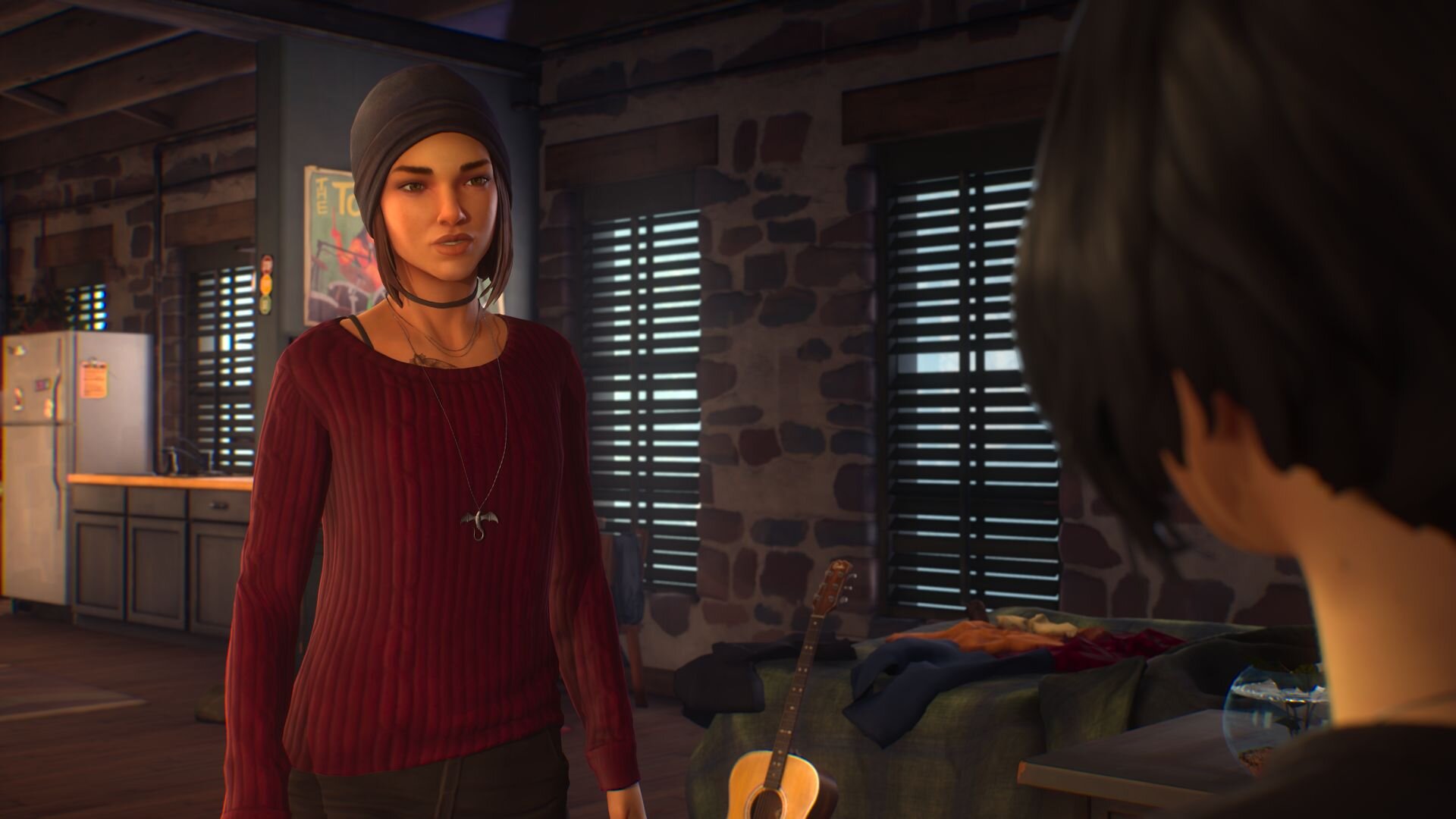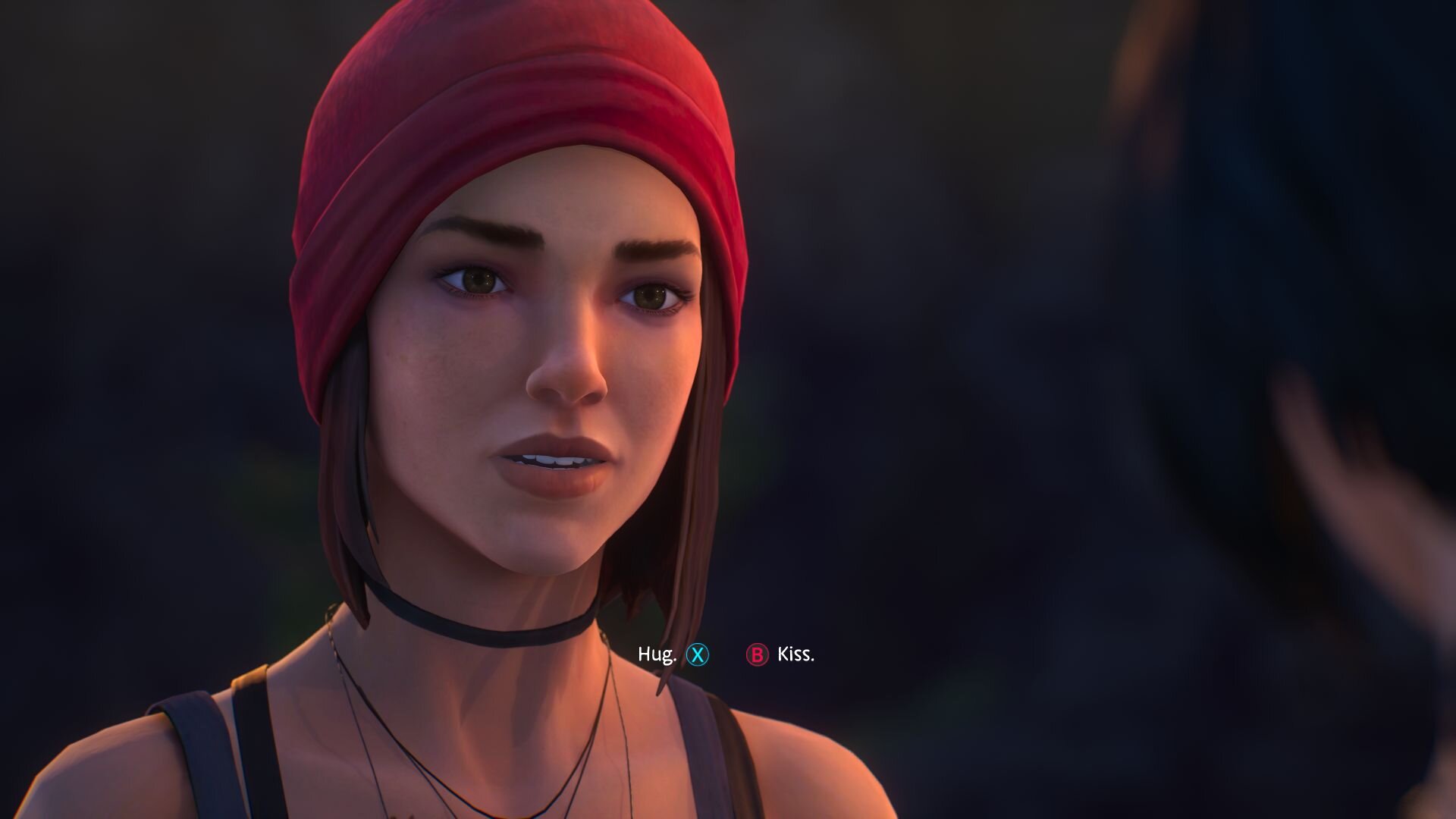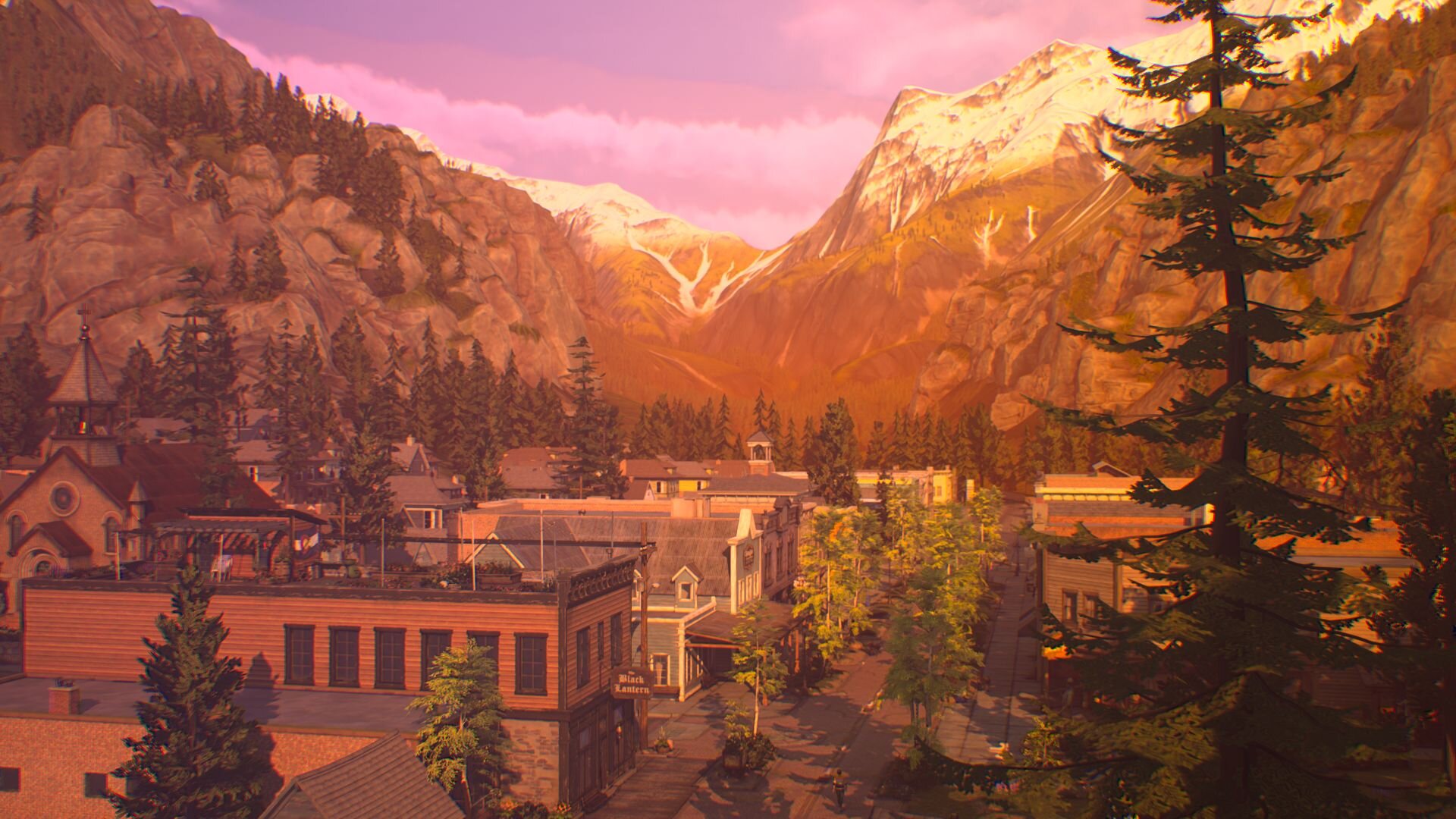A sea of emotions.
When Life is Strange: True Colors was announced, I was actually shocked that Deck Nine would be the main developer on it, assuming that Dontnod would be back alongside a new entry into the beloved series. Before the Storm, a prequel to the events of the first game, was a decent play for adding more to the backstory of the original but to have that studio helm the next game in the series, well, I was intrigued. The original Life is Strange is a top ten game for me, a masterpiece that I still think about to this very day. While Chloe Price still remains one of my favorite video game characters ever made, True Colors has impressively snuck the series crown for me in ways that I just wasn’t expecting and is on my shortlist for Game of the Year.
Unlike previous entries, Life is Strange: True Colors is released in full all at once, as opposed to trickling out as individual chapters that were weeks to months apart, and honestly, it allows the story to flow and feel far more consistent when you have it all available in one chunk, which is how I consumed the first game when it eventually released as a full package. While episodic games can serve a purpose, having the whole of True Colors available all at once allowed it to feel like a more complete experience and the game is vastly better for it. This also allows some of the pacing to feel less disjointed as you are not developing the game to have this break between chapters.
Our story starts as Alex Chen is reunited with her brother after eight long years apart, traveling to Haven Springs, Colorado to seek out a new life. It's here alongside her sibling, Gabe, where she will be introduced to the town, a collective of its supporting cast, and even some of the drama that is unfolding in this small rural community. While the brief moments between them are considerate and sweet, as they relive a few precious memories of their past, their reunion is unfortunately cut short when Gabe is killed in a freak accident, and as Alex begins to look into how it even happened, she'll uncover that some secrets are sometimes best left alone.
Alex Chen is a fascinating young woman and is often a joy in nearly every conversation or interaction. While this is largely a result of the game’s fantastic writing, it’s first-time actor Erika Mori’s performance; however; that absolutely nails it in the end. There is just something very real about what Mori brings to the role, making her both outgoing and yet socially vulnerable at the same time. Alex was raised through a foster family, after she and her brother were abandoned by their father, and it’s those experiences that have molded her into the young woman she is today. Her drive and determination to discover the truth behind what happened to Gabe is at the forefront of her time in Haven Springs. She is also a very different person than that of the previous protagonists, albeit being just as curious and witty about her surroundings as Max was in the first game.
The core gameplay follows the same choose your own adventure style as the previous entries, albeit in a much more visually stunning package. The typical aesthetic of the series is here with the wealth of blurred and smudgy posters and bulletin boards that are everywhere around town, but the overall environments and characters have never looked better. The swap to the Unreal Engine from that of Unity has certainly done wonders here as Haven Springs is spacious, colorful, and almost a character in itself. The facial capture alone, especially with Alex, is impressive as the game has a sense of style that doesn’t dip into the uncanny valley, showing once again that style over realism can go a long way.
While previous entries gave us bite-size locations to walk around in, they often were enclosed environments that were pretty small, ranging from a school hallway with limited classrooms to navigate, sometimes just a single room itself, to outdoor areas that were confined to very limited paths. Here, Haven Springs is a pretty wide-open area where you can miss out on a lot should you not explore when you have the chance. While you are limited in some ways to just main street, the park, and a few outlying areas, there are a few businesses that you can hop into as well, interacting with Steph at the Record Store, who is a character we met in Before the Storm, or Riley at the flower shop. Among a few other locations, there is also the Black Lantern, a tavern where a bulk of the game’s biggest moments will occur. Each of these locations are frequented by much of the supporting cast, such as Ryan Lucan, who is the son of Jed Lucan, the owner of the Black Lantern, as well as Charlotte and Ethan, a mother and son who were part of Gabe’s life prior to his sudden and tragic demise.
While each of the previous games had a wide selection of supporting characters, there were many that I just didn’t vibe with or that their writing left a lot to be desired. That, and some were only part of a few scenes, giving us next to nothing to know about them. Here, the residents of Haven Springs are written with a proper respect of depth and charm. As I would be introduced to them, I felt engaged to talk with them, to learn more about them as opposed to those conversations being a means to an end. Whenever they would require my aid, I willingly gave it; not just because that is what I assumed Alex would want as well, but because the game gave me reasons to be invested in them. Whether it was learning about what Eleanor was keeping from Riley or getting to know Jason Pike, the cop who I feel was inspired by Chris Pratt’s Parks and Rec’s character, I always felt that each member of the supporting cast felt written with enough layers to keep you invested in them and to keep them in eyes view when you start to investigate what led to Gabe’s death.
The two characters that you will get to know the most are Steph and Ryan, and it is with them that Alex will share her biggest secret; that she has the ability to feel the emotional state of those around her, and the thoughts they have when engulfed in those emotions. Each emotion is shown to us as a color; Sadness is blue, Fear is purple, Anger is red, and Joy, which Alex has rarely felt in its purest form, is a golden shimmer. This allows Alex to have an idea of how those around her are feeling, but if those feelings are too intense, it can infect Alex, causing her to replicate those emotions inside, and even have her see the world around her as they see it themselves. This plays into nearly every moment of the game, including a pretty intense scene at the start, and several key moments along the journey. While “feeling the emotions around her” was initially something I wasn’t sure on how well it would work, especially since Max had the ability to freakin’ rewind time, it’s a power that feels far better suited to telling this story and is implemented here beautifully despite not sounding too impressive on paper.
Alex can also absorb the emotion as well in some scenarios, but this will have repercussions if you do so. One such moment was whether or not to consume the anger from one of the supporting characters. While this will help them out in the moment, allowing them to move on, it causes Alex to retain that pent-up anger, and it can affect one of the following scenes in a big way. I chose not to take on that burden and instead met up with them, later on, to talk about what they went through, allowing for a pretty damn powerful moment in its own right. This way of absorbing their raw emotion doesn’t always end in a negative way for Alex, as one key usage afterward ended up helping me considerably later on, so it’s best to think long and hard about what it could mean going forward or dealing with the fallout of doing so. Since we don’t have the ability to rewind time, the choices we make are ours to keep, unless you, of course, reload a checkpoint or the chapter entirely. I mean, isn’t that really just another way to rewind time?
Each of the previous Life is Strange games were fairly linear and while this game does in some ways follow that same trend, the town is big enough to task on additional quests and character moments that you can miss should you not explore when you can. From aiding a pair of indecisive friends who have a secret crush on one another, helping someone track down a prized bird, or investigating a certain location while everyone is out at the festival, you can often find moments that some may have ended up missing out on, in fact, when seeing the percentage of that last given example, many seemed to have either not found them, or chose not to engage with a certain character. Whenever my choices would show up at the end of the chapter, I would notice a few options that I never encountered, making me wonder just how I either missed them, or what I had to do to make those moments happen. While most of the game does run on a track of go here and go there, there is more freedom here than we’ve had in previous entries, and hopefully, the series follows in this same openness going forward.
Each of the game’s five chapters has an individual story that does connect and progress the plot. Whether it’s Alex’s arrival in town or the tearful goodbye to Gabe in the title’s second chapter, Deck Nine has crafted so many heartfelt moments that are strung together in very inventive ways. This is most evident in chapter three, which is likely going to be some player’s favorite part of the game. Here, you take Ethan, who looked to Gabe as not only a dear friend, but that of a father figure, around the park to engage in a roleplaying event as a character he’s invented for his own comic book. The townsfolk are dressed in various outfits, spewing forth dialogue to serve his quest, and you, roleplaying as a Bard due to Alex’s natural gift with the guitar, will take part in turn-based battles alongside him, complete with various magic spells and special attacks. It’s ridiculously charming and goes a long way to showing how joyful life can be sometimes, even when living in the shadow of pain.
That moment, as well as many others, is one of the reasons why I adore this game so much and how impactful the whole experience was. It’s not just the smart writing, the authentic voice acting, the well-formed dialogue, or the enjoyable characters, but everything working in tandem. I’m not exaggerating when I say that True Colors is one of the best-written games I’ve ever played because honestly, it is. Sure, there are a few lines of dialogue that are a bit cheesy, but there are a few moments that are handled so expertly, especially as the town says farewell to Gabe, that really got to me. And while I won’t detail any spoilers, for obvious reasons, the chosen efforts I made along the way that got me to the end allowed me to see what Alex’s future would be should I pick one option, a cutscene that detailed what she could look forward to based on a choice I could make. I couldn’t help but tear up seeing this possible future for her, one that so perfectly encapsulated what I wanted for her and the love interest I chose. Honestly, it might be one of the best endings to a game I’ve experienced, a conclusion that I was obsessed with making happen that I didn’t hesitate when given the chance to do so.
For as much as I want to continue this praise for what Deck Nine has done here; because this game is a damn work of art, there are some technical problems that can have a massive effect on the pacing of certain scenes. While I had a few black squares show up when using my powers twice during the game, it is the loading times that are painful here when transitioning from scene to scene. In fact, the most pivotal use of Alex’s power ends with someone on their knees, emotionally exhausted. Had the scene faded to black and then seamlessly moved into the next scene, it would feel as powerful and impactful as it was likely aiming to be. But, as they drop to their knees, a second or two goes by, and then a load screen just sucks the air out of the moment. It’s a shame this game didn’t seem to take advantage of the SSD in the new consoles as it could have elevated so many scenes and locations to play so seamlessly with one another. It’s honestly my only glaring flaw with True Colors, which is otherwise a damn perfect experience.
Life is Strange: True Colors surprised the hell out of me with its quality in not just its upgraded visuals from the previous games, but in its acting and writing, something that was overly good before, but is leagues better here than it had any right to be. Had Alex Chen not been as engaging of a character here, it’s hard to say just how impactful this game would have ended up being. I loved picking out what she would wear and interacting with emotionally charged items that allowed me to get to know the townsfolk on a deeply personal level. I could honestly spend hours about how great the story was, the twists and turns it took, and how I simply adored where Alex ended up. True Colors is, without doubt, one of the best games I have ever played and despite the awkward loading times, is a game I highly recommended getting lost in. With the first DLC story chapter set to release shortly, it’s a great time to be a Life is Strange fan.
Developer - Deck Nine. Publisher - Square Enix. Released - September 9th, 2021. Available On - Xbox One/Series S/X, PS4/PS5, Windows, Nintendo Switch (Delayed), Google Stadia. Rated - (M) Blood, Drug Reference, Strong Language, Suggestive Themes, Use of Alcohol, Violence.
Platform Reviewed - Xbox Series X. Review Access - Life is Strange: True Colors - Deluxe Edition was purchased by the reviewer.














